The Weakest Link?
With an uncertain supply chain that still seems broken, many SMACNA contractors are turning to stockpiles and substitutions to keep projects and profits on track.
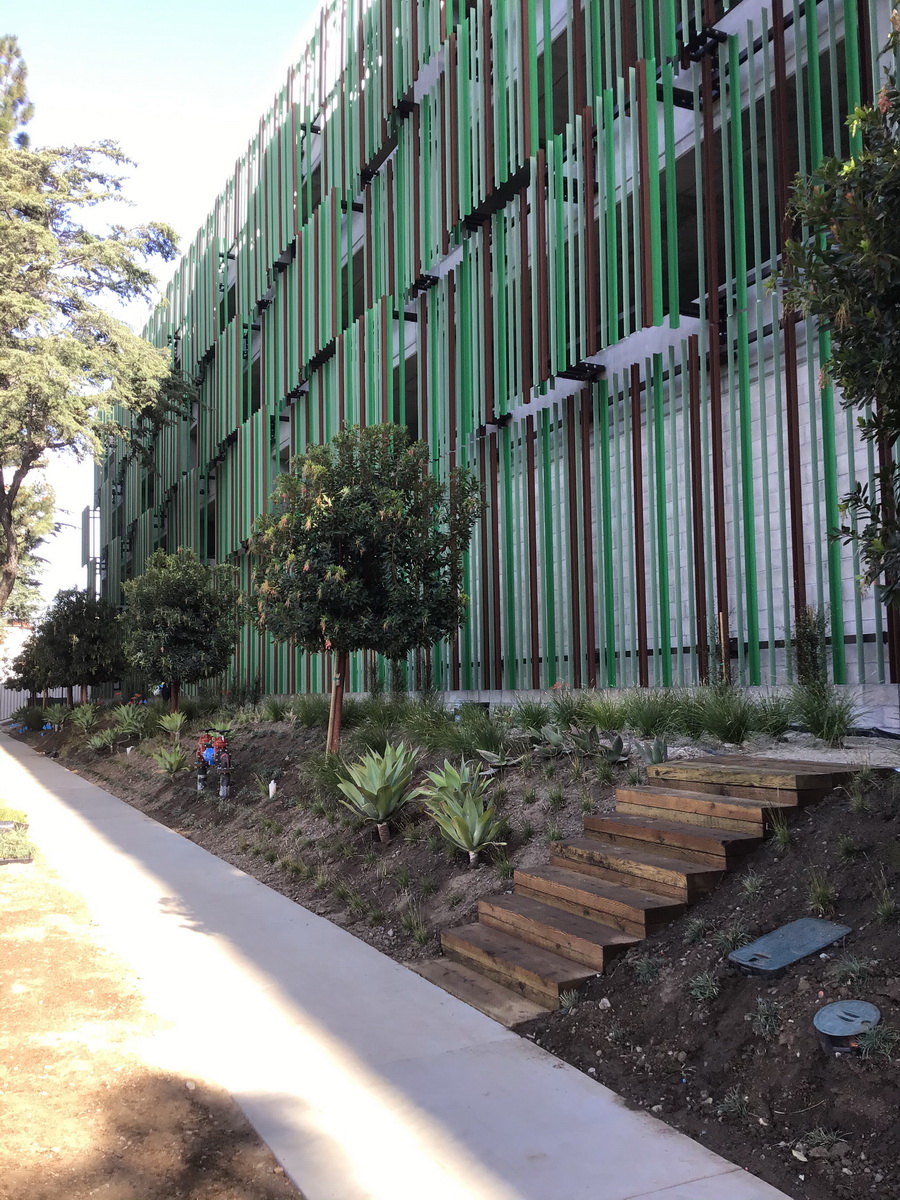
A side view of the offset framing that GES installed on a building at the historic Culver Studios, which has produced films since the silent era. The framing helped complete the look and design of the structure.
When supply chain problems threatened to delay one of GES Sheet Metal Inc.’s projects, the company didn’t sweat it.
Instead, clients asked if the Fontana, California, company could help keep the project going by suggesting alternate materials or making the suppliers’ parts on backorder.
“Whether it's aluminum extrusions or stainless-steel pipe clips with ready access to metals and a 16,000-square-foot sheet metal shop, there’s a lot GES can offer,” says David Lee, the firm’s president.
General contractors are often eager to hear the company’s ideas, he adds. And they’re even happier when the solutions GES proposes keep the project moving without impacting the budget.
As an architectural design-build firm, Lee says “the company specializes in finding creative solutions.”
“And it's amazing how (instead of) .090 aluminum, you can use .125 aluminum,” he says. “It takes more energy and effort on our end — and more engineering — to make a project go forward sometimes,” But the clients are pleased the projects proceed on schedule.
Many SMACNA members are now finding it necessary to be equally resourceful. At a time where periodic shortages can happen with almost any product from glue to specialty fasteners, the construction supply chain is still recovering from the COVID-19 pandemic. If the pandemic taught contractors anything, its how to be resourceful as they grapple with shortages, delays and price hikes. Contractors have responded by increasing inventory; adding or substituting new suppliers; inserting contract escalation clauses when possible; or like GES, suggesting alternate materials they can make themselves.
A recent survey of 1,032 construction contractors confirm just how common such moves are. According to the survey, only 9% of responding firms say they didn’t have any supply chain problems in 2022. More than 60% of contractors surveyed say they’re buying materials sooner after winning contracts than they did previously. A quarter say they’re stockpiling materials without contracts.
GES went beyond those mitigation steps to create a solution that helps their bottomline by creating and selling a product that also keeps the process moving.
Good supplier relationships help keep projects going
At GES, Lee says the company he co-owns with his wife, Michelle, has been fortunate to have good relationships with reliable metal suppliers.
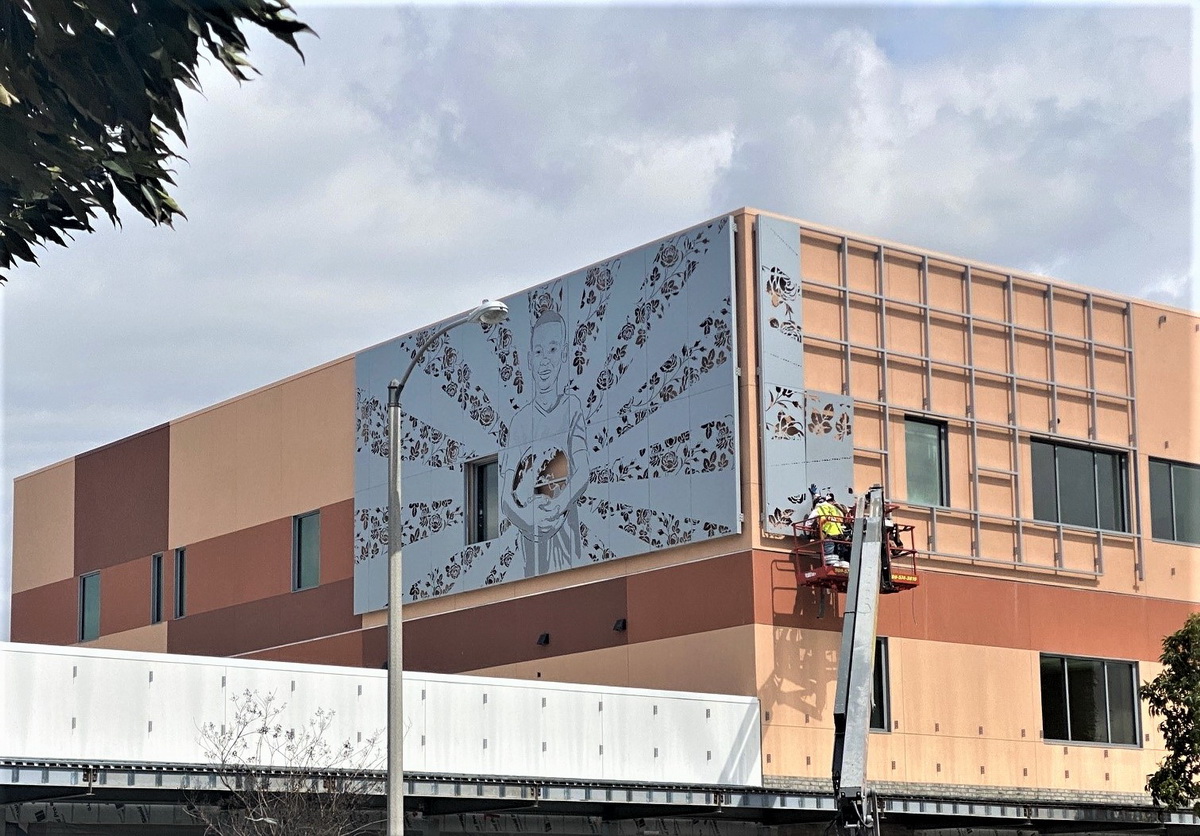
A GES worker installs a decorative panel at the Martin Luther King Jr. Community Hospital in Los Angeles. The company specializes in architectural sheet metal work.
“Traditionally, we’ve got a pretty good handle on aluminum, steel, copper and stainless with our suppliers,” he says. “Pretty much every other day we’re getting a recap on the material that’s available to us.”
And since GES can fabricate architectural panels, it can guarantee delivery — a big plus when many projects suffer delays.
“For us, it’s an in,” he says. “Now we're not waiting on a plumber to complete his work so that we can close up the exterior of the building. Those were the sort of things that allowed us to kind of control our destiny on some projects when we were being told that another sub that preceded us couldn't complete its work because of a supplier issue.”
The company has even been hired to work on projects originally awarded to competing companies to help keep them on track and on budget. “We were brought in for different solutions because of our fabrication capabilities,” Lee says. “They (the competitor) let the contractor know, ‘We can’t get this (but) GES can make it. GES has the laser, GES has the tooling. They have the capabilities.”
Custom paint colors can be hard to get
For some contractors, getting the metal for projects isn’t the problem — it’s securing the custom colors owners want to paint on them. In such cases, contractors have to persuade owners to approve alternatives.
Darren Cooper, the architectural division manager at Oregon’s General Sheet Metal (GSM), says the raw ingredient shortage in paint sometimes makes it tough to get the exact color building owners want.
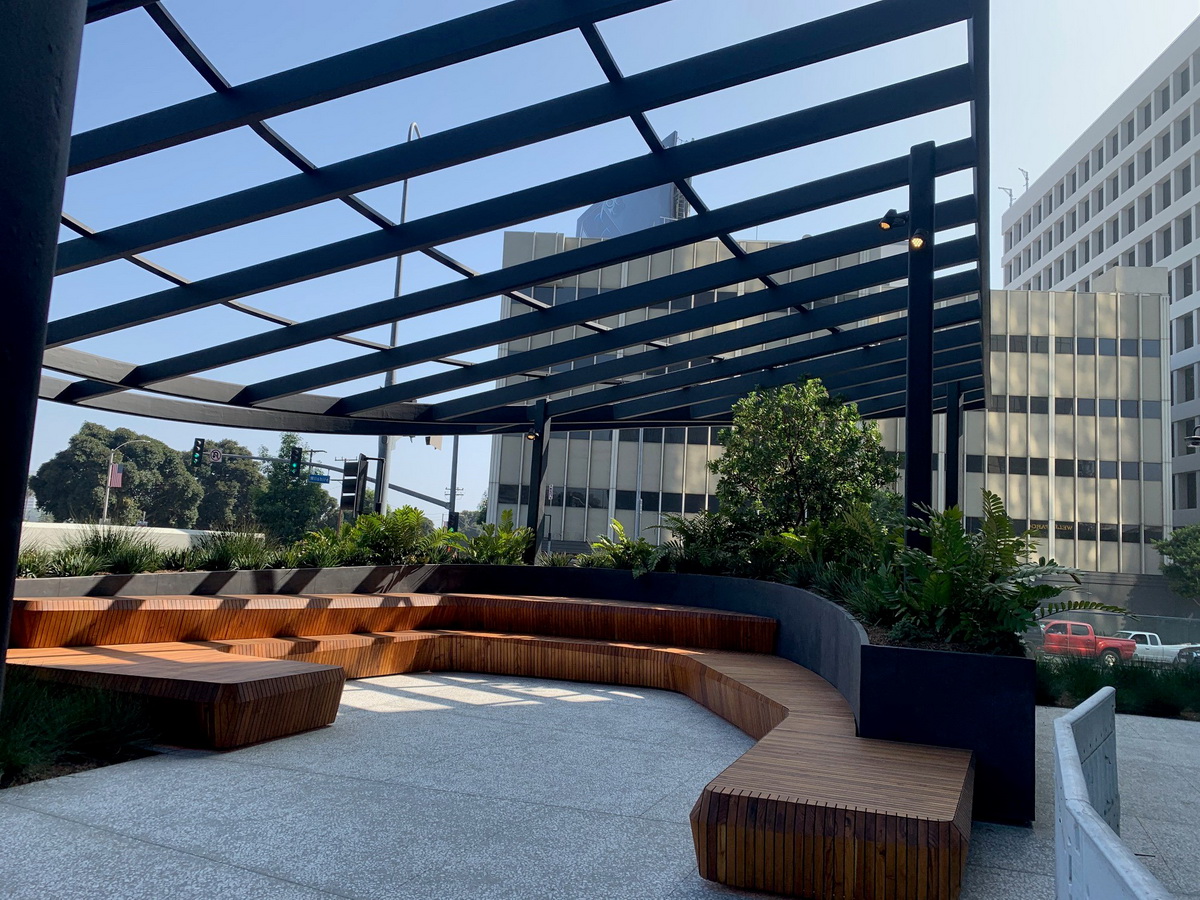
The sloping beams in the courtyard at 11601 Wilshire Blvd. in West Los Angeles were made and installed by GES Sheet Metal.
“That’s nationwide. It doesn’t just affect us. It affects multiple industries, which affects a lot of people,” he says. “The sheet metal industry is like the others. When it comes to getting paint, custom paint is very hard to get. Standard colors are fine. But because of the shortage of the raw ingredients in paint, it has forced material costs or the paint costs to go up.”
Cooper says he’s been told that a key ingredient in paint is also used by the automotive industry to make electric vehicle batteries, which is driving up costs and limiting supply.
“So it comes down to supply and demand, and who wants to pay what,” he says. “So what we did is we kind of steered away from custom colors or found suppliers that had bigger ranges of standard colors.”
Insulation shortages mean substitutions, longer waits
Insulation is another material where shortages mean GSM officials occasionally need to sell architects or owners on possible alternatives.
“A lot of our products were coming out of Texas, and with COVID and some of the storms that went through, there were certainly some pretty large delays getting insulation,” Cooper says. “And some plants were shut. So we had to find alternative sources for that — which we can. The architects were willing to work with that and go to a different product with the same (R) values.”
With some materials, such as insulated metal panels, the problem isn’t availability; it’s lead times. Products that used to take eight weeks to get are now taking 16 or 24 weeks, he says.
“So when you've got a project that starts in three months, and your submittals take three weeks, and you have to order it, it's going to be touch-and-go if you get the material in time,” he says. “So there’s a lot of juggling early on in our contract award time, bringing the long lead time items straight to the front line to buy out. So we don’t delay the project.”
Cooper said GSM hasn’t had any difficulty getting the metals needed for its different architectural projects.
“We’ve been very, very lucky,” he says. “We’ve tried to stay with vendors who are close to us. One for availability; two to save money for the customer on freight costs and (to) get a speedier delivery time frame.”
Historic restoration complicates the supply chain
Unfortunately, not all SMACNA contractors have been as lucky in securing metal or getting clients to accept a substitute.
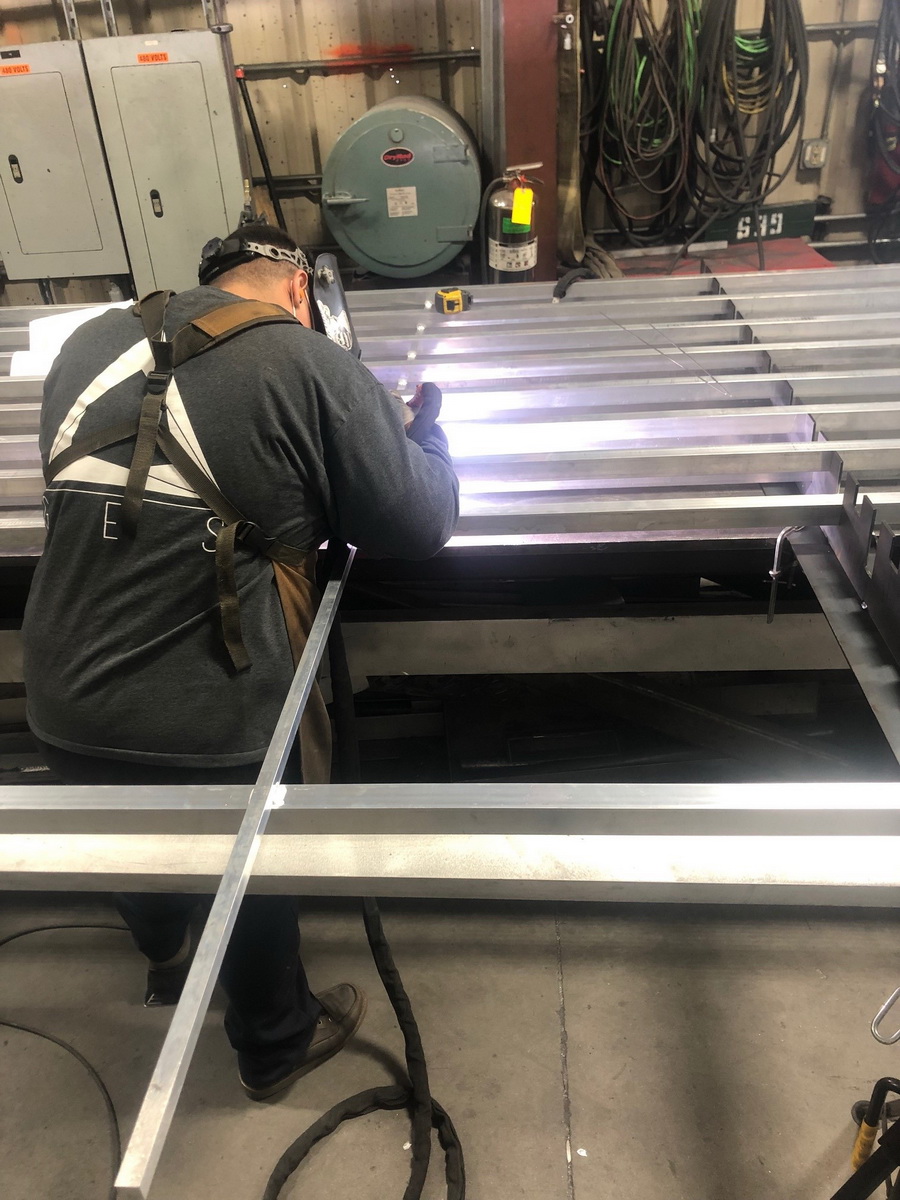
The trellis used at 10100 Santa Monica Blvd. in Los Angeles was made in GES’ sheet metal shop.
When you’re involved in historic restoration work, the opportunities for material substitutions are limited. Glenn Parvin could tell you. Parvin is the owner and president of Custom Architectural Sheet Metal Specialists of Detroit — better known as CASS Sheet Metal. The company’s high-profile restoration projects include the state capitol in Lansing, Michigan, and a 111-year-old Detroit train depot that narrowly avoided multiple dates with a demolition crew.
Owners want what they want, he says. And that makes his company’s projects exposed to the whims of the supply chain.
For example, the roof of the Detroit train station required over 35,000 square feet of 16-ounce copper, plus 20-ounce copper for the deck and gutters at the roof's perimeter. Over the course of the project, the malleable metal went from $3.30 to $7 a pound with a one-year lead time.
CASS was able to buy copper at $4.60 a pound. “We almost considered ourselves lucky” to get that price, Parvin says. “We were able to secure all of our copper well in advance of its actual need.” However, that price was greater than the $60,000 escalation allowance CASS had put into its contract. “We historically always put an escalation allowance in anything copper, because of how volatile it is,” he says. “Fortunately, we didn’t get hurt too bad on that deal. We had most of it covered.”
Many materials have shot up in price
Besides copper, Parvin says other common roofing materials such as plywood and polyisocyanurate (ISO) insulation have seen at least short-term price hikes. Plywood went from $36 to $98 a sheet, he says, and insulation was in such demand that suppliers refused to quote a price before shipment.
CASS and a lot of other area roofing contractors responded to market conditions by stocking up on materials whenever they could. But as demand has slowed, many have found themselves stuck with more than they need.
“The insulation market kind of settled itself,” Parvin says. “I’m trying to get rid of an extra 50,000 square feet of insulation right now. I thought I was going to be able to get rid of the ISO very easily … (but) all the contractors have yards full of insulation, so nobody wants to buy the insulation that I have.”
While the local supply chain has started to loosen up, Parvin said prices on most metals are nowhere near what they were before the pandemic.
“Metal doubled in cost. What used to be $2 a square foot is $4 a square foot,” he says. “They’re starting to self-correct, but they’re not dropping to where they were. I’m very hopeful — knock on wood — that things start to work more in our favor as prices start to settle.”
However, Parvin says he doesn’t expect to see prices similar to what he was paying in early 2020 ever again.
“People a lot smarter than me always say with economics: When you go through a big inflation period, the prices don’t ever really come and settle all the way back to where they were,” he says.
More paint problems
Like GSM in Oregon, Parvin says finding some paints has been difficult. He’s had to work with architects and owners on finding alternatives for hard-to-get custom colors.
“Those custom paint colors are six to eight weeks out at best coming from the manufacturers,” he says. “They’re a real problem. Some of the pigments are difficult to get. They had a run with black where you couldn't get that for a while. Dark blues were a big problem in the supply chain and caused a big delay on one particular project.”
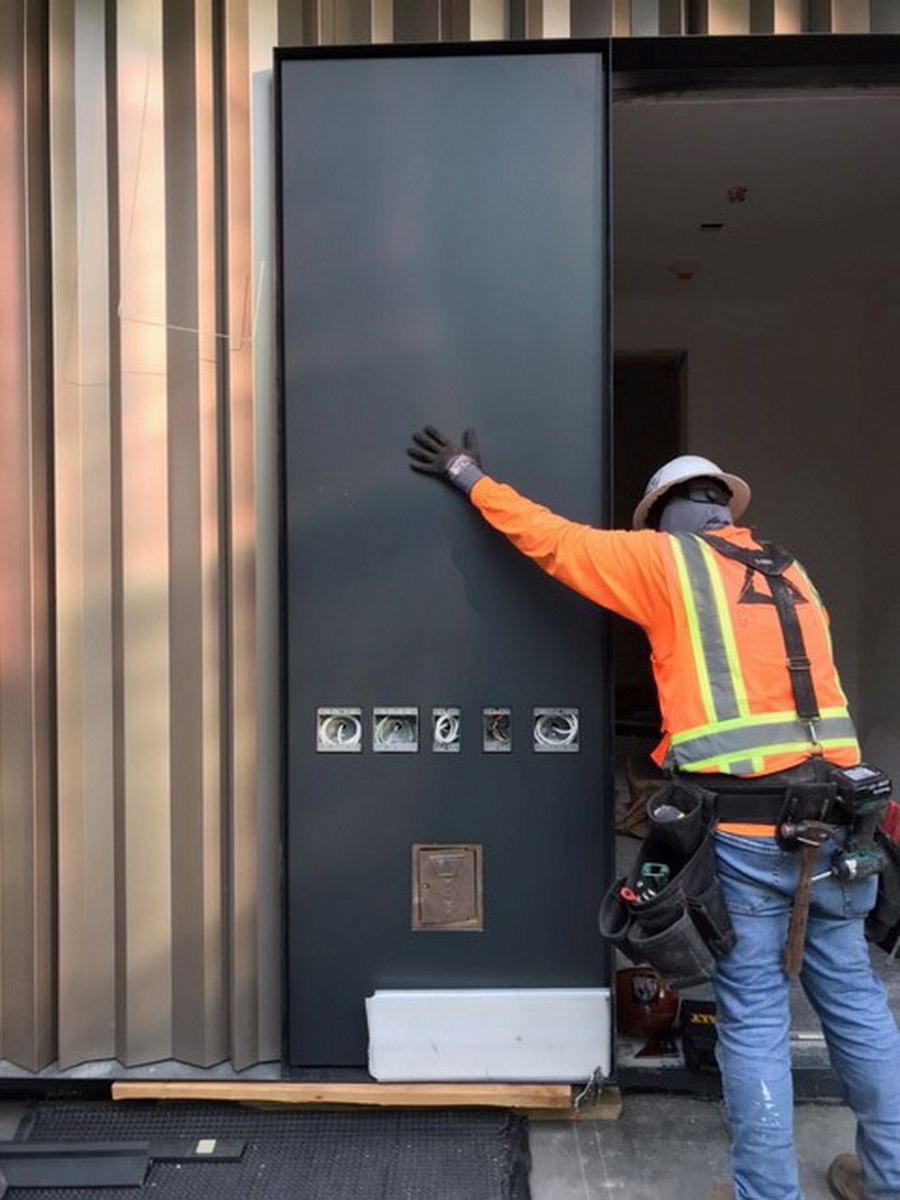
A GES worker installs a back panel at Harvey Mudd College, a private science and engineering school in Claremont, California. GES’ work is on buildings throughout the Los Angeles area.
The client on that project — a large southeastern Michigan regional hospital — would not accept a stock color. For branding reasons, the client only wanted its custom blue. “And they waited for it,” he says.
But in many cases, clients are willing to accept a color that’s close as long as costs are comparable and it keeps the project moving.
Some owners, however, won’t accept any deviations from what they’ve approved. That was the case with another recent CASS project, the 20-story Huntington Tower in Detroit. CASS was able to secure the last 90 sheets of 14-gauge duplex stainless steel in the U.S. to keep the project on track. But it cost Parvin almost twice as much to get it.
Parvin says the owner wasn’t interested in any alternatives. “They weren’t bending,” he says.
The supply chain is better — really
While it still has a ways to go, the supply chain is better, says Jay Bowman, a construction industry analyst with FMI who has spoken at several SMACNA events.
“We’ve seen the number of container ships unloading at ports has actually improved,” Bowman says. “We’ve seen where delays in getting some materials have eased.”
While the COVID-19 pandemic caused almost all economic activity to stop in March 2020, resuming normal operations hasn’t been as quick or smooth. And that’s not unusual, given the severity of the disruption, Bowman says.
“I would caution people to understand that ‘better’ is coming from probably one of the worst supply chain shortages we've ever seen post-World War II,” he says.
With the pandemic’s major impact now over, the supply chain should start to feel close to normal within a year, Bowman predicts. However, the willingness of contractors to try different approaches and suggest alternative materials should not be abandoned.
“I think people still need to think about those things and still use them,” he says. “I think even when things get back to normal, that's a good muscle for people to have.”
Published: March 21, 2023
IN THIS ISSUE
Between the Lava and the Rain
Hawaii Sheet Metal & Mechanical works amid the challenges of an active volcano.
Crafting Metal Works of Art
Artists make unique clients for A. Zahner Co., which has extensive experience in this area.
Effective High-end Residential Strategies
T.H. Martin shares eight tips for working on condos, apartments and hybrid spaces.
How SMACNA Is Increasing Engagement Opportunities
Measuring and evaluating engagement and utilizing that information to tailor programming to the needs of members is now more important than ever.
HVAC for U.S. Air Force Hangars
United Mechanical tackles its fifth hangar project — the KC-46A Three Bay Maintenance Hangar at Tinker Air Force Base in Midwest City, Oklahoma.
Inside SMACNA's 2023 Strategic Plan
SMACNA’s CEO discusses the new strategic plan and how it will strengthen SMACNA’s position with key stakeholders.
Opportunity Is In The Air
Assuring clean air in buildings is becoming an essential service, and members can easily gain the tools to perform in-demand ventilation verification work.
State Marijuana Laws May Pose Security Clearance Problems for Contractors
In recent years, states have moved quickly to pass laws legalizing marijuana. To date, 21 states have legalized recreational marijuana and an additional 16 states have authorized marijuana for medical use.
State of the Union Response & GSA Carbon Scoring Rule Updates
Both chambers were in session in early February for the State of the Union legislative week. On Feb. 7, President Biden gave the State of the Union address to a pre-pandemic-sized crowd in the House chambers.
The Weakest Link?
With an uncertain supply chain that still seems broken, many SMACNA contractors are turning to stockpiles and substitutions to keep projects and profits on track.
Top Contractor Strategies for 2023: Part 1
With 2023 well underway, there is still a lot of noise in the world today that detours business owners from charting a confident course through this new year.
Understanding Possible Targets of Cyberattacks
With reports telling us that cyberattacks have been perpetually on the rise, and with the cybersecurity industry not only short millions of qualified professionals but also suffering from burnout, preparing for attacks is getting tougher.
Welcome New SMACNA Members
Welcome New SMACNA Members


